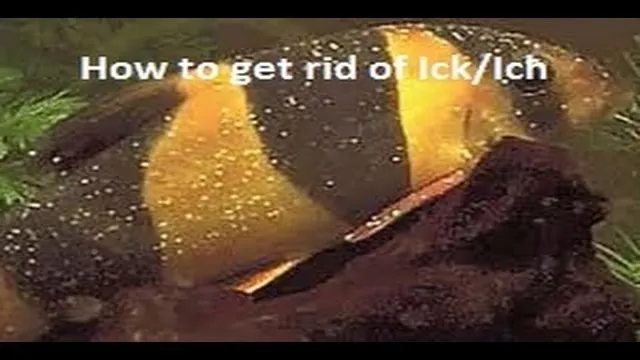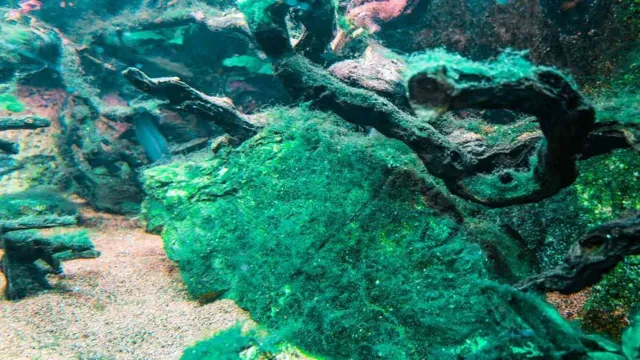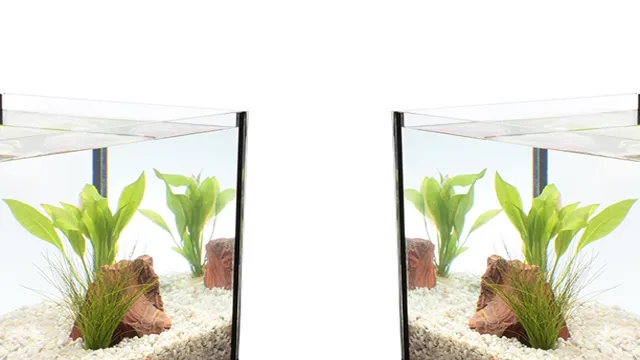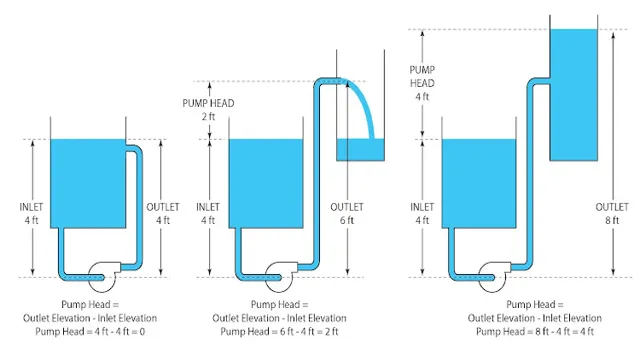Are you struggling with pesky pond snails that just won’t seem to go away? Do they keep infiltrating your aquarium and disrupting the peace of your underwater world? Don’t worry, you’re not alone! Pond snails can be quite the nuisance, as they reproduce quickly and can quickly take over your tank, causing harm to your aquatic plants and other fish. But fear not, we’ve got you covered with a comprehensive guide on how to effectively kill those stubborn snails once and for all. Whether you’re dealing with a small infestation or a full-blown invasion, we’ve got tips and tricks to help you combat these unwanted critters.
We’ll cover everything from chemical solutions to natural remedies, so you can choose the method that’s best suited to your preferences and needs. You’ll learn how to identify different types of pond snails and the most effective ways to get rid of them without causing harm to your aquatic ecosystem. Say goodbye to unwanted pond snails and hello to a pristine aquarium with our expert guide.
Clean and clear waters await you!
Understanding the Problem
Aquarium and pond snails can be quite a nuisance to deal with, and getting rid of them can be a challenge. One of the ways to kill them is by using chemical treatments, but this comes with the risk of harming other aquatic life in your tank or pond. Another effective method is using natural remedies such as introducing snail-eating fish or adding plants that produce chemicals that snails find unappealing.
However, it’s important to note that these solutions may not work for all types of snails, and some methods may take longer to get rid of the problem entirely. Additionally, it’s crucial to address the root cause of the snail infestation, which could be overfeeding or poor water quality. By tackling the underlying issues and using a combination of methods, you can successfully eliminate aquarium and pond snails and keep them from coming back.
Types of Aquarium Pond Snails
Aquarium Pond Snails Are you contemplating snails in your aquarium pond? Then understanding the different types of aquarium pond snails is a must. There are several species to choose from, including Ramshorn, Mystery, Nerite, and Malaysian trumpet snails. The Ramshorn snail’s unique shape and shell patterns complement the appearance of the aquarium pond.
On the other hand, Mystery snails boast a broad range of shell colors with a practical application in algae management and adding to the visual appeal. Nerite snails are efficient and effective algae eaters but need to eat additional food supplements, while Malaysian trumpet snails do an exceptional job of breaking down waste and keeping the aquarium pond clean. Understanding the various types of aquarium pond snails provides insight into each species’ advantages and disadvantages, enabling you to choose the ideal species for your aquarium pond needs.
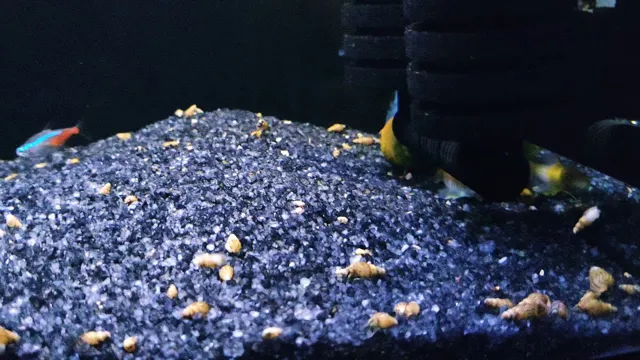
Negative Effects of Snails in Your Aquarium Pond
Snails in your aquarium pond can be a real hassle if left unchecked. These slimy creatures may seem harmless enough, but they can quickly overrun your tank and cause some serious problems. One of the biggest issues is their propensity to reproduce rapidly, which can lead to overcrowding and reduced water quality.
Snails also have a tendency to eat plants, making it difficult to maintain a healthy and aesthetically pleasing environment for your aquatic pets. Additionally, certain species of snails can carry diseases and parasites, potentially infecting your other tank inhabitants. If you’re struggling with a snail infestation, it’s important to address the issue promptly before it gets out of hand.
This may involve removing excess snails manually or using chemical treatments to keep their numbers in check. Whatever route you choose, it’s essential to monitor your tank regularly and take action if the problem resurfaces.
Preventive Measures
Aquarium pond snails can be a nuisance for many fish keepers. Besides looking unsightly, they can reproduce quickly and overpopulate your aquarium, upsetting the natural balance. Fortunately, there are a few preventive measures you can take to stop them from invading your aquarium.
The first step is to inspect any new plants or decorations for any signs of snails before adding them to your aquarium. You can also quarantine new plants for a few weeks to monitor them for snails or other pests. Additionally, avoid overfeeding your fish and maintain a clean aquarium to eliminate any food leftovers that snails might feed on. (See Also: How to Get Rid of Smelly Aquarium Water: Tips and Tricks for a Clean and Fresh Tank)
Finally, avoid introducing any live food that may have snails or their eggs. By following these measures, you can control snail populations in your aquarium and keep your fish and plants healthy. However, if you do find that you have snails in your aquarium, there are several humane ways to remove them without harming your fish.
Maintaining Good Water Quality
Maintaining good water quality is essential for our health and the environment. Prevention is key, and there are several steps we can take to ensure that our water stays clean and safe to use. One of the most effective ways is to reduce the amount of pollution that enters our water sources.
This can be done by properly disposing of hazardous materials, using non-toxic cleaning products, and avoiding plastic waste. Additionally, it’s crucial to maintain septic systems to prevent leaks and to regularly inspect and maintain any pipes or plumbing systems to prevent leaks or contamination. By taking these preventive measures, we can help to protect our precious water resources and promote a healthier environment for ourselves and future generations.
Limiting Overfeeding and Overcrowding
When it comes to preventing overfeeding and overcrowding in pets, there are a few key measures you can take. Firstly, it’s important to be mindful of your pet’s feeding schedule and portion size, and to avoid overindulging them with treats. Overfeeding can lead to obesity and various health problems, so it’s important to consult with your veterinarian regarding your pet’s nutritional needs.
Additionally, it’s important to ensure that pets have enough space to move around and play, and to avoid overcrowding them in cages or living quarters. This can lead to stress and other behavioral problems, so be sure to provide your pet with a comfortable and spacious environment. By taking these simple steps, you can ensure that your pet stays healthy, happy, and well-adjusted.
Quarantining New Plants and Fish
When introducing new plants or fish to your aquarium or garden, quarantining them is an essential preventive measure to take. Quarantining helps to prevent the spread of diseases and potential harm to the existing flora and fauna. Before introducing new plants or fish to your environment, isolate them in a separate tank or container for at least two weeks.
During this period, observe them closely for any signs of disease or abnormal behavior, such as lethargy or loss of appetite. It’s also essential to check for any discoloration or spots on their skin, as these could be signs of illness. Furthermore, you should ensure that you disinfect all tools and equipment used in handling the new plant or fish to prevent cross-contamination.
Although it may seem like a tedious process, quarantining new additions to your aquarium or garden is necessary in maintaining a healthy and harmonious environment.
Natural Remedies
Aquarium pond snails can be a nuisance if their numbers get out of hand. Luckily, there are natural remedies you can use to get rid of them without harming your other aquatic life. One effective method is to introduce predators, such as Assassin snails or Looch fish, that will eat the pond snails.
Another option is to use a copper-based snail killer solution, which is safe for most aquarium plants and fish. However, be sure to follow the dosage instructions carefully to prevent harm to your aquatic pets. If you prefer a more natural approach, you can try removing the snails manually by baiting them with vegetable matter and removing them from the aquarium once they have gathered on the bait.
Additionally, keeping your aquarium clean and free of excess food and debris can limit the snail population growth. With a little patience and persistence, you can keep your aquarium pond snail-free and enjoy a healthy aquatic environment for all of your inhabitants. (See Also: How to Dismantle Aquarium: A Step-by-Step Guide to Disassembling Your Fish Tank)
Introducing Predatory Species
If you’re dealing with infestation, natural remedies can be an effective way to keep predatory species at bay. These natural predators, such as ladybugs, praying mantises, and nematodes, can help manage the population of pests in your garden or home. For example, ladybugs love to feed on aphids, while praying mantises prey upon grasshoppers, flies, and even other insects.
Nematodes, on the other hand, are microscopic worms that target soil-dwelling pests like grubs, flea larvae, and root maggot. By introducing these predators into your environment, you can control the population of harmful pests without resorting to toxic chemicals or sprays. Plus, they offer a more sustainable and eco-friendly solution to pest control.
So, next time you spot some unwanted guests, consider natural predators as a solution instead of reaching for harmful pesticides.
Manual Removal Techniques
If you’re looking for natural remedies to get rid of pesky skin tags, there are a variety of options available to you. One of the most popular methods is to use essential oils such as tea tree oil or frankincense oil. Simply apply a few drops to the affected area using a cotton swab, leave it on for a few hours, and then wash it off with lukewarm water.
Another effective option is to use apple cider vinegar, which is well-known for its antibacterial and anti-inflammatory properties. Use a cotton ball to dab the vinegar onto the skin tag, covering it completely, and repeating the process several times throughout the day. Lastly, some people have had success using garlic paste, which is made by crushing a fresh garlic clove and applying it to the skin tag.
Cover it with a bandage and leave it on overnight, repeating the process daily until the skin tag falls off. Remember to always do a patch test before trying any of these remedies and always consult with a healthcare provider if you have any concerns.
Using Chemical Treatments
When it comes to treating pests in your garden, chemical treatments may be effective, but they come with potential risks to yourself, your family, and the environment. That’s why opting for natural remedies is always the best choice. Natural remedies are not only safer but also more cost-effective in the long run.
Consider using neem oil, a natural insecticide derived from the seeds of the neem tree. It disrupts pests’ growth and development and can control a variety of pests such as aphids, whiteflies, and spider mites. You could also try using insecticidal soap made by mixing pure soap with water.
This creates a spray that suffocates pests and can control soft-bodied insects like mealybugs, scale, and spider mites. Additionally, introducing ladybugs into your garden can help control aphids and other small insects. Ultimately, using natural remedies is an effective way to control pests in your garden without hazardous chemicals.
Conclusion
In summary, killing aquarium pond snails can be done using a variety of methods, such as manually removing them, using chemical treatments, or introducing natural predators like assassin snails. However, before you resort to snail slaughter, it’s important to understand the role these critters play in your aquatic ecosystem and consider alternative solutions like reducing overfeeding or adjusting water parameters. Remember, a healthy aquarium is one that maintains a balance between all its inhabitants, so let’s strive for harmony, not snail-icide. (See Also: How to Grow Moss on Driftwood in Aquarium: A Comprehensive Guide for Beginners)
“
FAQs
What are aquarium pond snails and why are they a problem?
Aquarium pond snails are a common type of freshwater snail that can quickly multiply and overrun a tank or pond. They can clog filters, eat plants, and spread diseases to other aquatic animals.
How do aquarium pond snails reproduce?
These snails reproduce quickly and frequently, laying bundles of eggs that can hatch into hundreds of baby snails. They can also self-fertilize, so even one snail can quickly become a pest.
What are some natural ways to control aquarium pond snail populations?
Adding snail-eating fish like loaches or assassin snails, manually removing snail egg bundles, reducing overfeeding, and adding cucumber or lettuce as a bait trap are all natural ways to help control aquarium pond snail populations.
Can chemicals be used to kill aquarium pond snails?
There are chemicals available that can kill aquarium pond snails, but they can also harm other aquatic life and disrupt the ecosystem of the tank or pond. It’s best to use natural methods to control snail populations whenever possible.
How can I prevent aquarium pond snails from entering my tank or pond?
Quarantine new plants before adding them to your tank or pond, regularly clean equipment to prevent hitchhikers, and avoid overfeeding your fish to prevent excess snail food.
Will reducing feeding to control snails starve my fish?
No, reducing feeding to control snail populations will not starve your fish as long as you are still providing them with enough food to meet their dietary needs.
What can I do if aquarium pond snails keep coming back despite my efforts?
If natural methods aren’t working or snail populations keep returning, you may need to consider more drastic measures like removing all plants and decorations from the tank and starting from scratch, or using a snail trap or chemical treatment.



